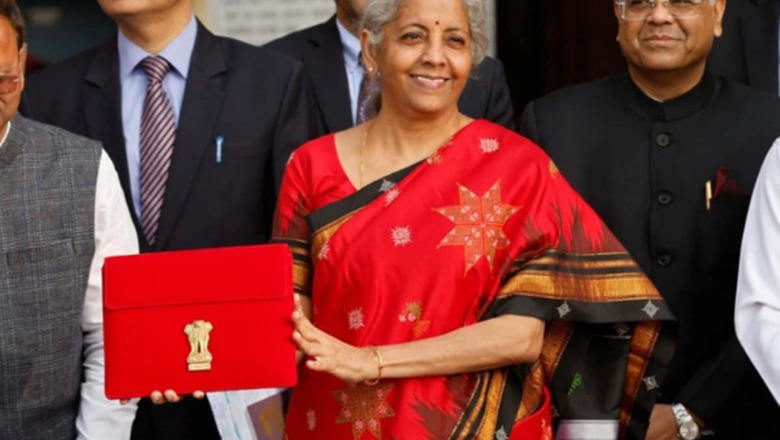
views
Over the years, Indian finance ministers have been captured in photographs as they entered parliament carrying a briefcase for the yearly Budget presentation. However, this tradition underwent a significant transformation in 2019, when Finance Minister Nirmala Sitharaman opted for a ‘Bahi Khata,’ bidding farewell to the conventional Budget briefcase.
Also Read: No Economic Survey To Be Presented On January 31, Here’s Why
What Is ‘Bahi Khata’?
In 2019, Finance Minister Sitharaman ushered in a departure from the iconic budget briefcase, opting instead for a “Bahi Khata” or cloth ledger. This decision aimed to break away from the colonial tradition where British finance ministers used to carry a “Gladstone Box” to Parliament, a practice subsequently replaced by bags and briefcases. India embraced a similar transition.
In the lead-up to the 2019 budget presentation, Nirmala Sitharaman was observed with a red Bahi Khata, a traditional ledger of accounts, instead of the customary briefcase. This departure was interpreted as a symbolic renunciation of the colonial legacy, as the briefcase itself was a vestige of British rule in India, modelled after the ‘Gladstone box’ utilised in British budget presentations.
- Break away from a colonial practice: The briefcase was seen as a remnant of British rule in India. Using the Bahi Khata, a traditional Indian accounting tool, was seen as a way to embrace the country’s heritage and symbolism.
- Connect with the common people: The Bahi Khata is a familiar symbol for many Indians, particularly those in rural areas and small businesses. Using it was seen as a way to make the budget presentation more relatable and accessible to the average citizen.
- Signal a focus on financial inclusion: The Bahi Khata is often used by small businesses and entrepreneurs to track their finances. Using it was seen as a way to signal the government’s commitment to supporting these sectors.
The inaugural union budget of independent India saw its first finance minister, RK Shankmukham Chetty, adhering to the British tradition by transporting documents in a leather portfolio bag. Subsequently, in the following years, various finance ministers opted for distinct briefcases to present the budget.
In contrast, Sitharaman’s choice to utilise the Bahi Khata added an indigenous flair to the budgetary process.
“I thought it was better we move out from the British handhold. And I thought it was good enough to do something on our own. It was easier for me to carry also and very Indian,” Sitharaman said of her decision to use the red silk Bahi Khata.
The customary vessel for budget documents made its second and final appearance in 2020. However, the subsequent year witnessed a departure from this traditional book of accounts in favour of a more contemporary device. In 2021, Nirmala Sitharaman presented the budget in a paperless format, employing a domestically manufactured tablet.
In 2021, 2022, and once more in 2023, she brought the tablet to parliament enclosed in a red pouch reminiscent of the Bahi Khata style. The choice to adopt a tablet was perceived as a stride in support of the government’s Digital India initiative.
Interim Budget 2024
Like the previous three full union budgets, the interim union budget 2024 will also be delivered in paperless form. The interim union budget 2024 is to be presented on February 01, 2024.
Union Budget Mobile App For Budget Documents
All the union budget documents, including the Annual Financial Statement (commonly known as Budget), Demand for Grants (DG), Finance Bill, etc., will be available on the “Union Budget Mobile App” for hassle-free access to budget documents by Members of Parliament and the general public using the simplest form of digital convenience.
It is bilingual (English & Hindi) and will be available on both Android and iOS platforms.
The app can also be downloaded from the union budget web portal (www.indiabudget.gov.in).
The budget documents will be available on the mobile app after the completion of the budget speech by the union finance minister in parliament.




















Comments
0 comment